5 Benefits of Airless Pump Technology
Products such as lotions, soaps, perfumes, facial creams, and many others, especially in the personal care industry, are formulated to be used in small amounts. Selecting the best dispensing method is important to maintain the product’s integrity while delivering the best customer experience. The packaging selected must consider the viscosity of the product, how the formula interacts with the dispensing system, and ensure that the majority of the contents can be evacuated from the packaging. Airless pump technology is a type of dispensing system that is utilized in the personal care and beauty marketplace.
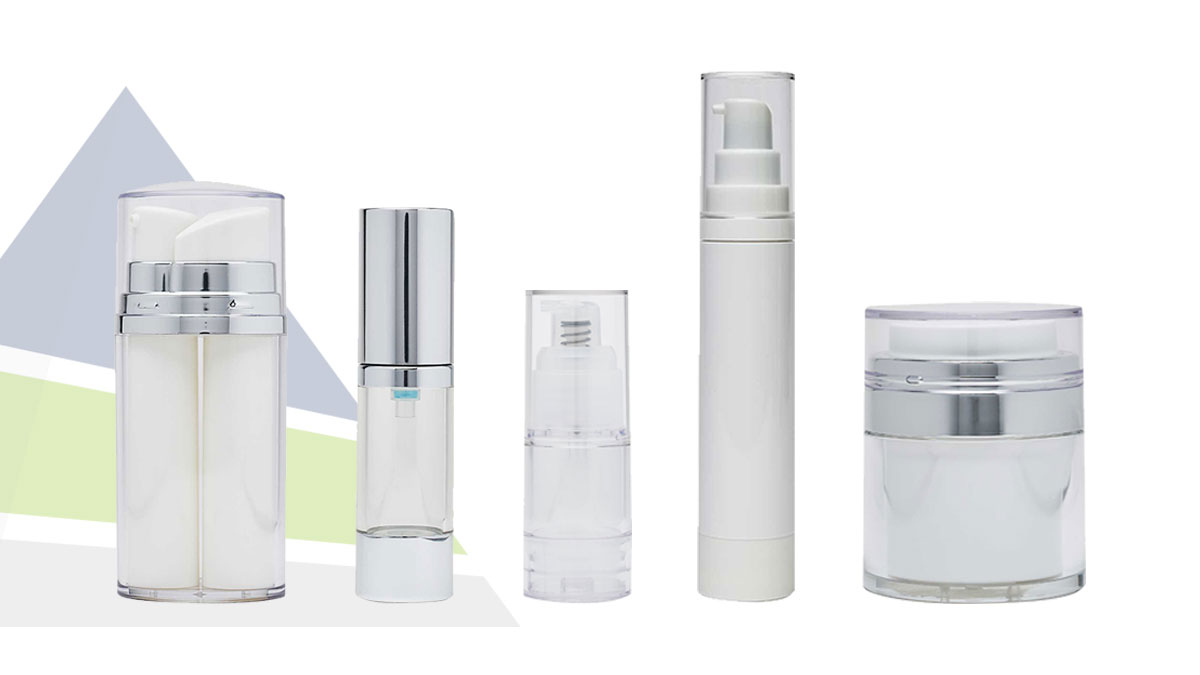
What is Airless Pump Technology?
The defining feature of airless pump technology is its ability to create a barrier between the product and the external air that can quickly deteriorate the product. Airless pump technology does not use air to move the product from the packaging or rely on a pressurized system using air. Instead, a vacuum effect is used to activate the pump’s components to dispense the product. The technology does not allow air to come in contact with the formula which greatly increases the product’s life span.
What are the Parts of Airless Pump Packaging?
Airless packaging consists of three parts: base, piston, and pump. These three components may have different configurations based on the output specifications for the product.
Base
The base is the area that houses the piston and the pump. A small hole in the base allows air to be pushed or pulled inside the component.
Piston
Depending on the airless system design, either a piston or bag can be found between the product and the base of the container. A piston is more commonly used with airless pump technology. The piston acts as a squeegee against the sidewalls within the packaging. The consumer depresses the actuator which allows air to enter the base, moving the piston upward and pushing the product out of the actuator. A similar effect is achieved with designs utilizing a bag instead of a piston.
Pump
The pump creates the vacuum effect that passes through the base.
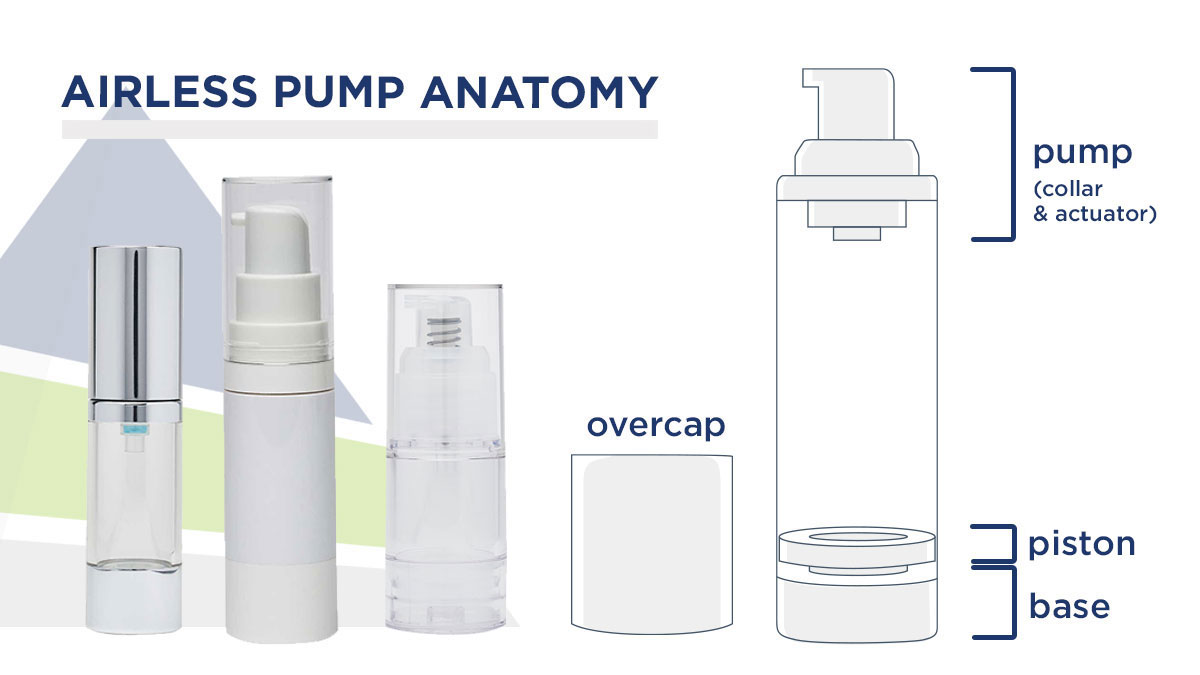
Popular Airless Technology
Airless pump technology can be used with aluminum cans, plastic bottles and jars. There are several types of airless bottle designs depending on how the product needs to be dispensed.
Bag in Bottle
The bag-in-bottle will have a collapsible bag inside the bottle. The product is filled into a collapsible bag. The airless pump dispenser becomes activated as the bag collapses. In this design, no air comes into contact with the system as a vacuum effect causes the bag to fold in on itself. The bag may be placed inside plastic bottles or jars.
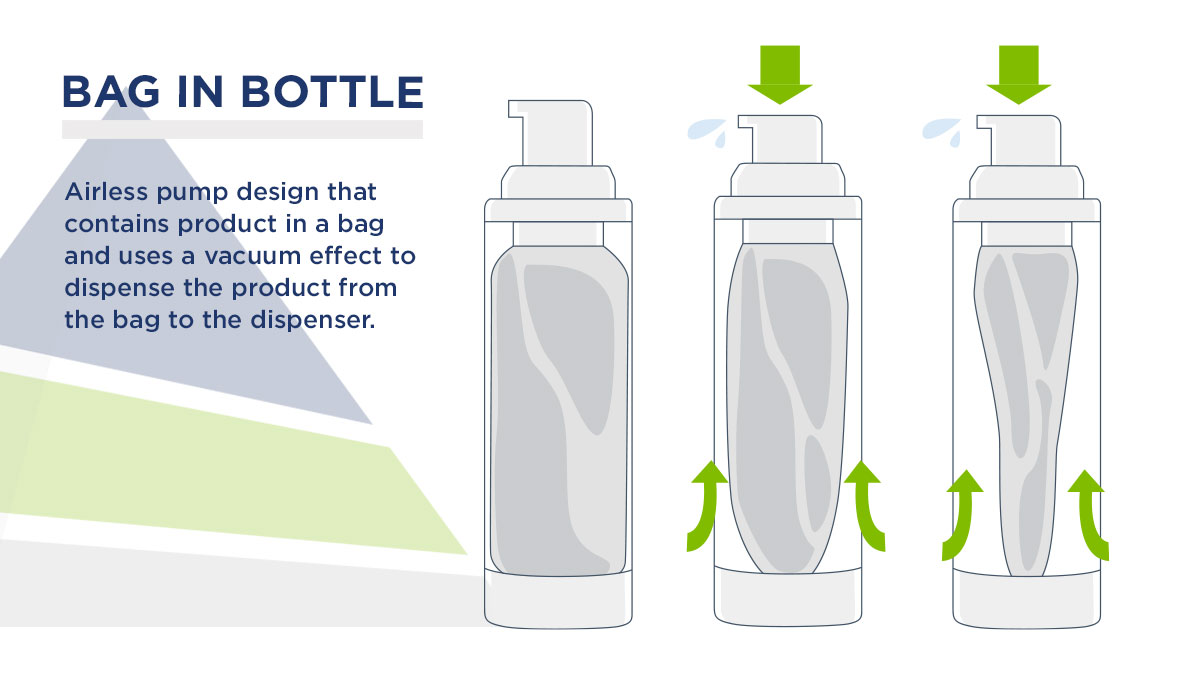
Piston System
In a piston system, pressure is created to push up against the product. When the pump is activated, the pressure raises the piston causing the plate to push the product through the dispenser cap or opening. Piston systems are commonly used in luxury cosmetics and skincare products. However, this system limits the packaging shape and is a less sustainable option.

Bag on Valve
For a Bag on Valve (BOV) system, the product is contained inside a foil bag with a valve attached. Air or nitrogen propellant remains inside the product packaging, but outside of the foil bag that holds the product. To activate the airless packaging, the pump is pressed and the product is squeezed out of the bag by the propellant. As the air or nitrogen fills the open space, the foil bag becomes compressed and pushes the product from the can or bottle. The BOV system is commonly used with aluminum cans and plastic bottles for aerosol-type products, but a very specific grade of plastic is required to withstand the pressure exerted onto the bottle.
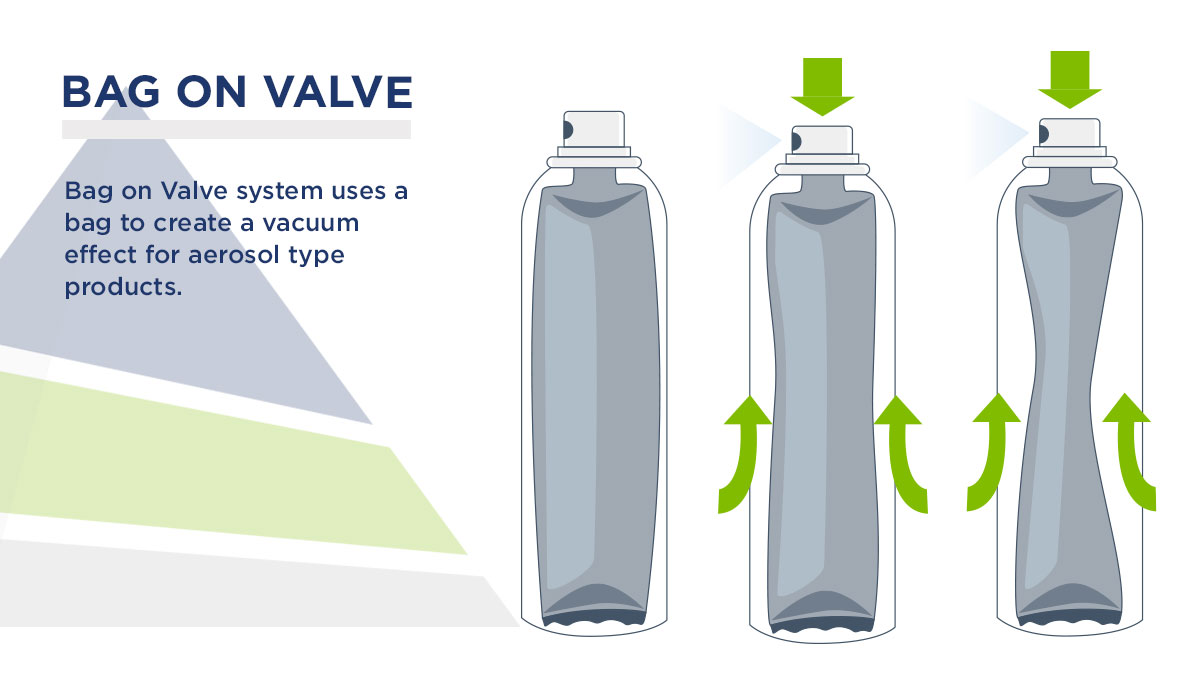
5 Benefits of Airless Pump Technology
Airless pump technology is designed to help preserve product integrity and also deliver optimal user experience, especially for products that should be used in smaller quantities. Often these types of products are also more expensive and consumers do not want any product going to waste. This technology prevents additional effort needed by users to access every last drop of product from the container. In addition to the technology’s core protective and delivery function, the following are some additional benefits of using airless pump packaging.
Hygienic
Product spoilage occurs when it comes in contact with exterior air, dirt, dust, and other pollutants. Airless pump technology prevents contamination by keeping pollutants from reaching the product inside the packaging. The package prevents air or consumers from coming into contact with the product inside of the container until the product is evacuated.
Longer Preservation/ Freshness
Product efficacy can dictate customer sales. If the product spoils too quickly, consumers will choose a different product that will last longer. Airless packaging helps prolong the freshness of the product by not allowing contact with air. The product is completely sealed inside the jar, bottle, or can. The packaging can also slow or prevent the growth of bacteria that can occur when germs on a person’s hands are introduced to the product through manual removal. Airless pumps prevent direct contact with the product.
Metered Dispensing
Airless pump technology can allow a specific amount of product to be dispensed at once. This feature allows the user to dispense an exact amount of product with just a few presses of the pump. Metered dispensing helps lower the amount of product waste by dispensing an exact amount of product with each pump.
Product Evacuation
A common complaint with standard dispensers is that they cannot push out all of the contents. The product at the bottom of the container remains inaccessible due to the length or shape of the container. Any product with a thicker consistency will be difficult to remove manually resulting in product waste. However, with the technology of airless pump dispensers, users get nearly 99+% evacuation of the product, effectively reducing product waste.
Convenience
The convenience of airless pump technology is that it can be used in any position. The container can be held upright, sideways, or sometimes even upside-down, and still operate effectively. Another feature is its 360-degree dispensing capability which makes this particularly convenient for lotions.
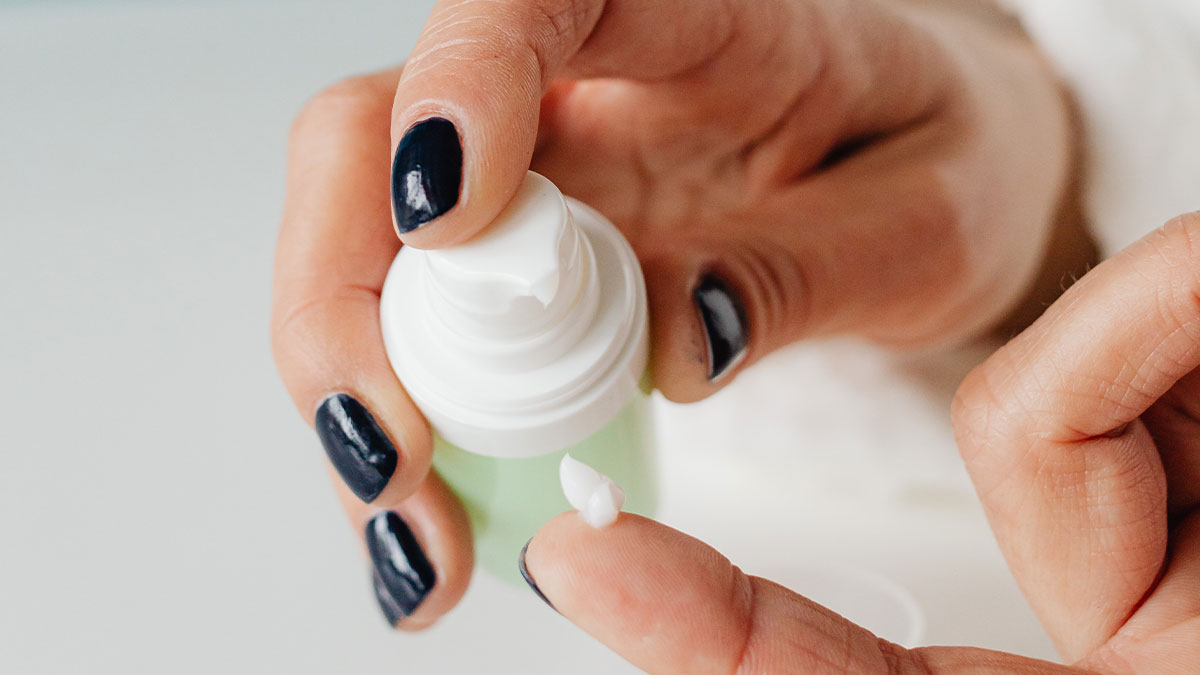
The Best Products to Package with Airless Pumps
Products that work well with airless pumps are high-viscosity liquids, gels, and creams. It is also ideal for products that are sensitive to air or outside contaminants. Personal care and cosmetics are commonly found in airless pump dispensers. A dual airless chamber is another form of airless packaging used for products with ingredients that need to be stored separately but are combined when dispensed. The following products are commonly used with airless packaging:
- Lotions
- Foundations
- Gels
- Organic creams
- Natural creams
- Serums

Take Advantage of the Benefits of Airless Pump Technology Today
Airless pump technology is a convenient and effective packaging solution that minimizes product waste, improves shelf life, and dispenses an exact amount of product. It works with a wide range of packaging, including airless pump bottles and airless pump jars which are a popular choice for elevated personal care and cosmetics product packaging. Contact our customer care team today to find out if airless technology is right for you and your brand.
Hayley is a marketing professional and copywriter with a background in crafting content for a diverse range of industries. She has been writing about packaging and supply chain logistics for Paramount Global since 2022. She specializes in explaining complex topics in a clear and engaging way and is an advocate for sustainability in packaging and supply chain management.
Read More
For over forty years, Paramount has been delivering perfectly integrated packaging and supply chain solutions.
